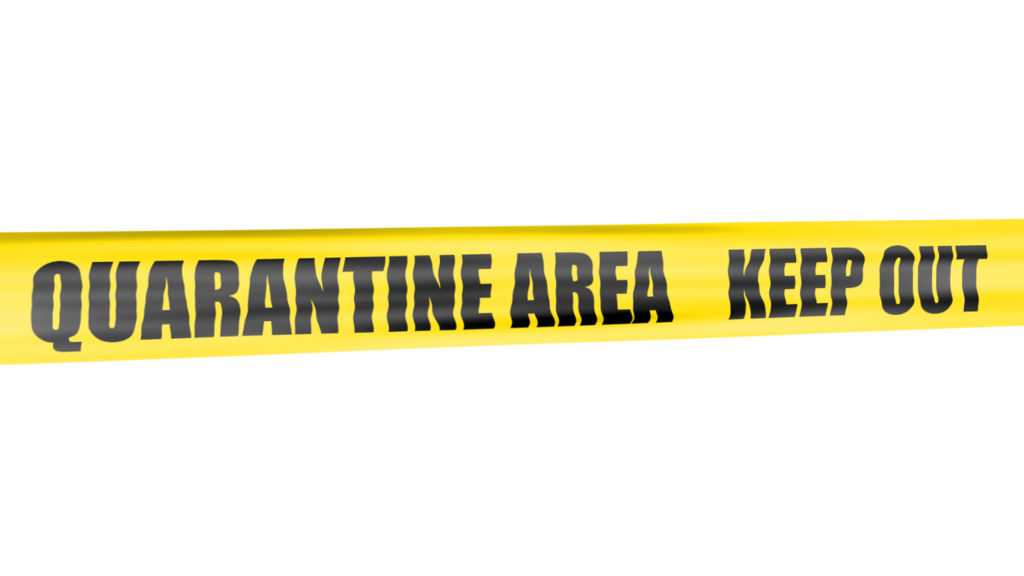If your horse becomes ill with a contagious disease, you’ll want to protect the rest of the herd. Unfortunately, not many of us have the space needed to provide complete isolation. But even if you can’t put an ailing horse in a separate barn or distant paddock, you can take steps to minimize the risk of spreading his illness:
• Move the horse to a stall at the end of the barn, next to the open doors. Good ventilation (but not drafts) will not only be healthier for your patient, but also help disburse airborne pathogens. Leave the stall adjacent to your sick horse empty if you can.
• If you have visitors to your barn, put a sign on the sick horse’s stall door asking that no one touch him. Even a friendly pat on the nose can transfer pathogens to the next horse that person visits.
• Designate a specific person to care only for the sick horse, handling the feeding and grooming of the patient but not interacting at all with the others. If you can’t enlist extra help, finish taking care of the healthy horses before tending to the sick one.
• After leaving the sick horse, wash your hands and change your clothes. The easiest approach may be to find a spot near the stall to store a pair of old boots along with coveralls you can slip over your clothes while you’re working with him.
• Set aside feed buckets, brushes and other tools to be used only for the sick horse. After he has recovered, disinfect these items with a mild bleach solution and return them to general service.
• When watering, avoid submerging the hose end in sequential buckets, which can readily spread disease throughout the barn. In fact, this is a good habit to follow even when you don’t have a disease outbreak.
• Never turn out a sick horse in a space that will subsequently be used by healthy ones. If you don’t have a separate paddock, either hand-graze the patient until he has recovered or erect temporary fencing to cordon off a separate area for him in a larger field—use a double barrier, with the two fences set far enough apart that horses can’t lean across and touch noses.

How soon you can safely return healthy horses to the space depends on the hardiness of the pathogen that had caused the illness and your environmental conditions. Ask your veterinarian for guidelines. While the sick horse is isolated, take all the other horses’ temperatures daily, using a separate thermometer for each. Often the first sign of illness is a mild fever, and there may be no other warning. Follow your veterinarian’s protocol for what to do if you find another horse with a fever.





